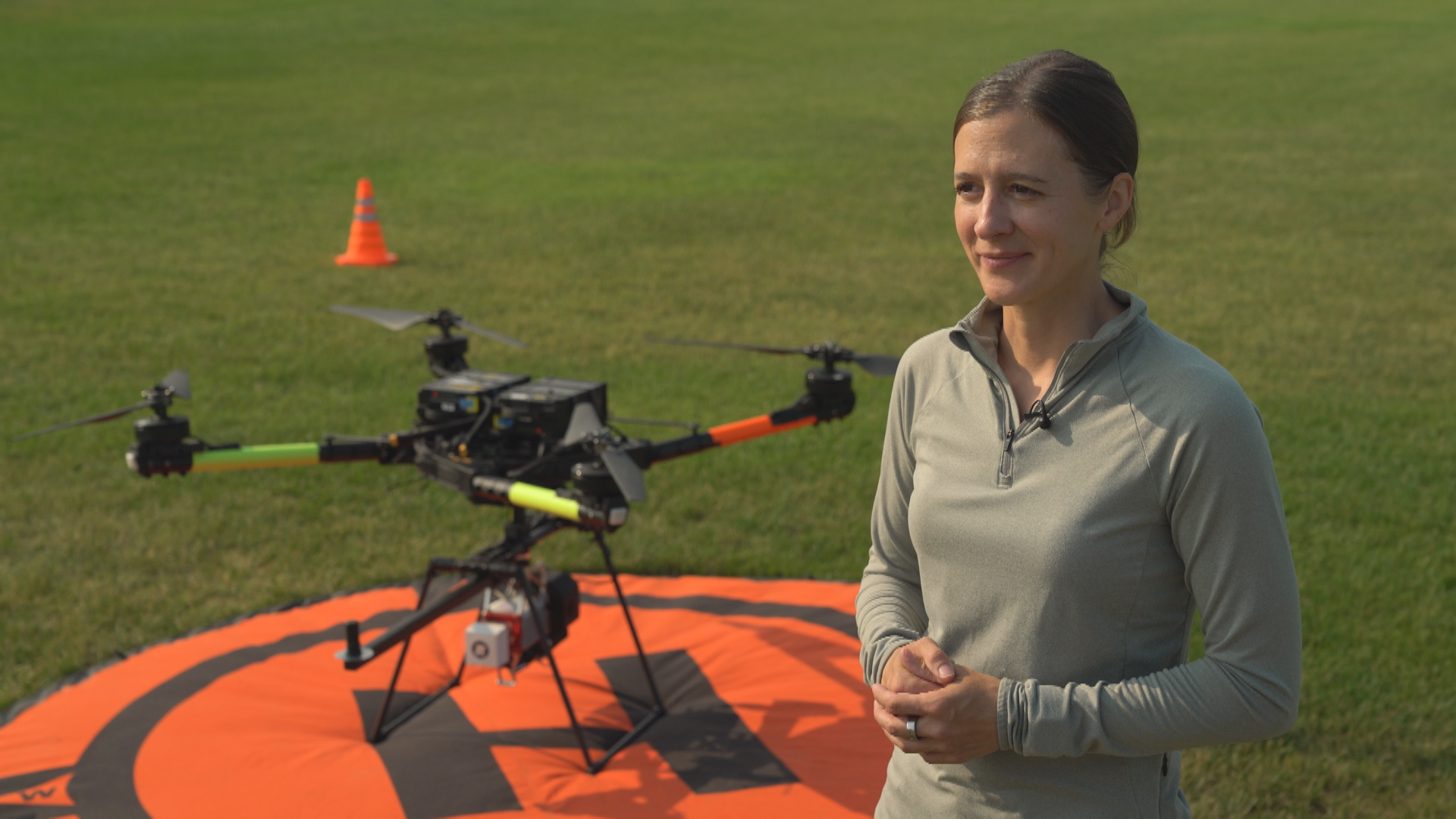EAGAN, Minn. — Sure, MnDOT may be the face of our highway projects, but there's a side to the department like you've never seen.
Did you know that MnDOT has a Department of Aeronautics?
"The Department of Aeronautics is under the multimodal section," Katie Gilmore said. "We work with our airports and communities to do aviation on the ground."
Gilmore is the Unmanned Aircraft Systems manager at the Department of Aeronautics.
"We oversee the drone program for MnDOT and we also have a number of pilots that fly both manned and unmanned aircraft," she added.
Before you say the Department of Transportation has no business being up in the air, Gilmore said they're actually already there and aiming to fly higher.
"We were just awarded a partnership with NASA and we're really excited about it," Gilmore said, with a big smile. "The unmanned aircraft that we're looking at with NASA are actually people carriers and cargo carriers, so they're large. It's kind of a marriage between an unmanned aircraft like this, and a traditional aircraft."
Gilmore pointed to a nearly 6ft by 6ft drone they had set up. The behemoth of a drone is already in use for so many things, like surveying terrain. So something like that could be the inspiration for the future.
"Some will carry passengers or cargo," Gilmore said. "They will start out as manned but highly automated much like our aircraft. These will be interstate short distances."
Think about how the pandemic has changed how many of us work.
"Maybe you live in Waconia and you need to come to Minneapolis once or twice a week," Gilmore said. "You can go to a transit station in Waconia and hop in an unmanned pod - think of The Jetsons, not your personal aircraft, but it will be a transit system - hop on a pod in Waconia and come to a transit station in Minneapolis, hop on a bus and go to work."
Figuring out how that would work and how that might be received by the public is what MnDOT is focusing on with NASA. Gilmore said gauging public opinion and data is very important at this stage, because all this is no longer a moonshot.
"It requires FAA certification, it requires updated infrastructure. The work we're doing today really prepares us for the future so we can adopt these technologies when they are available," GIlmore said.
When asked if this was going to manifest in our lifetime, Gilmore said, "definitely in our generation. We're driving this bus."
MnDOT's Department of Aeronautics will soon start creating work groups to engage the public. You can keep an eye out for any related updates here.

